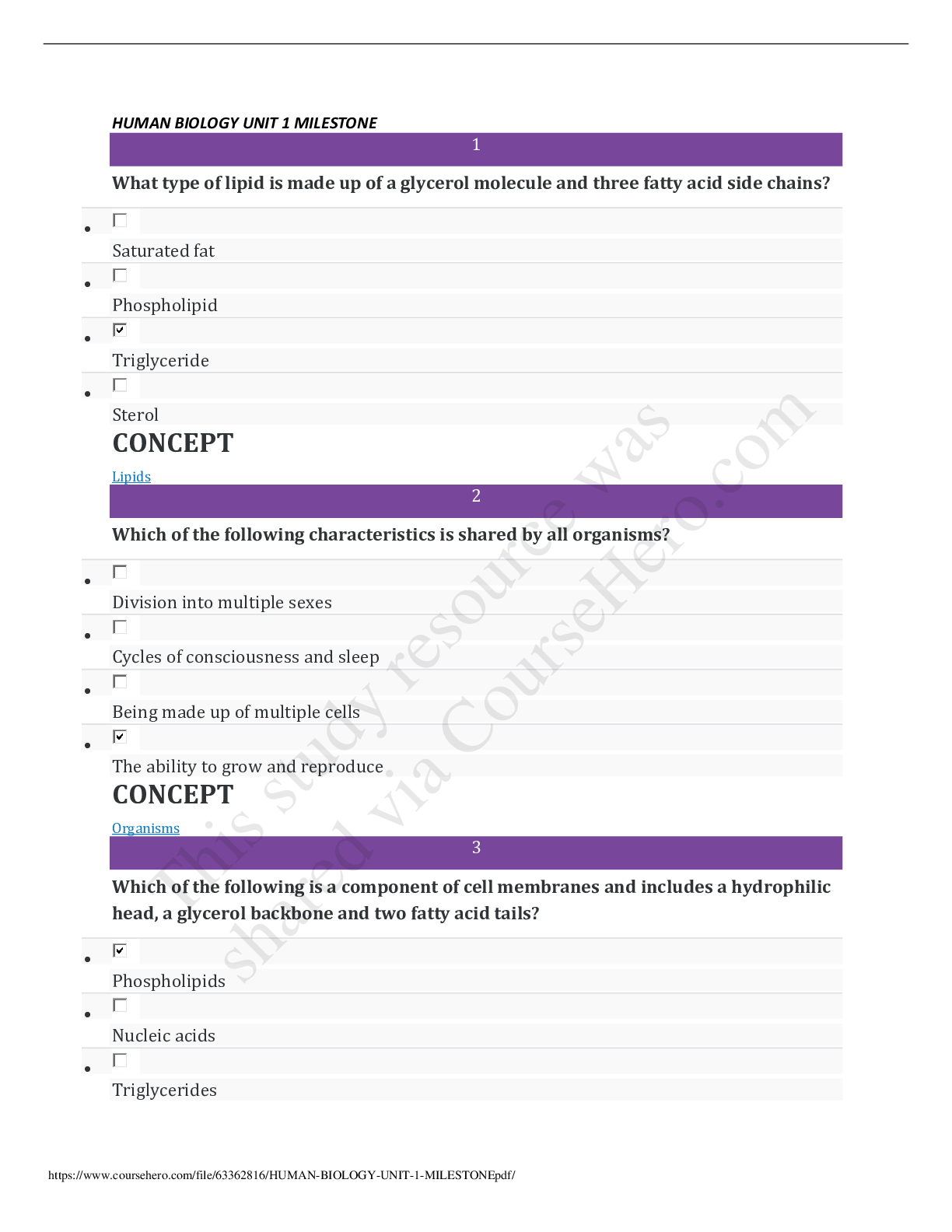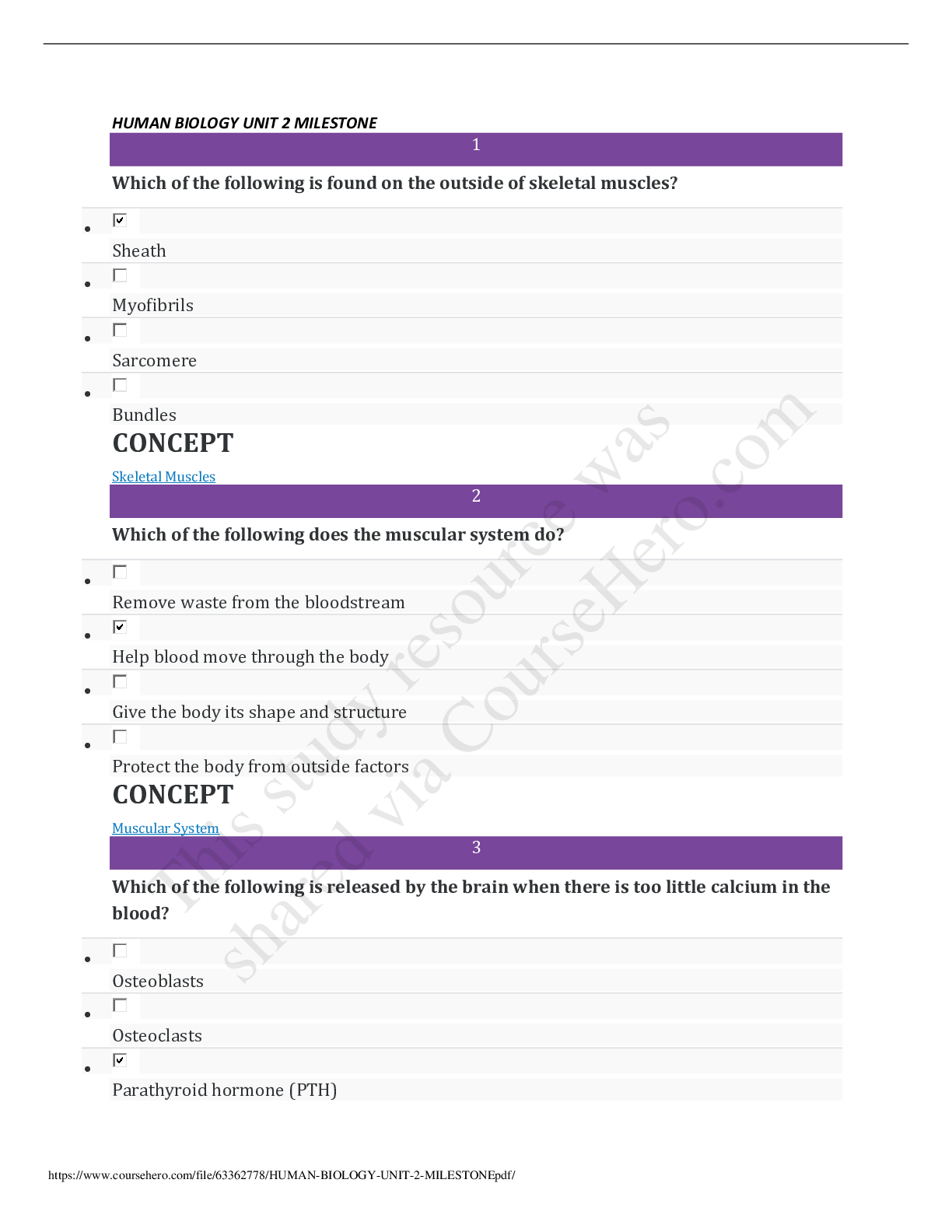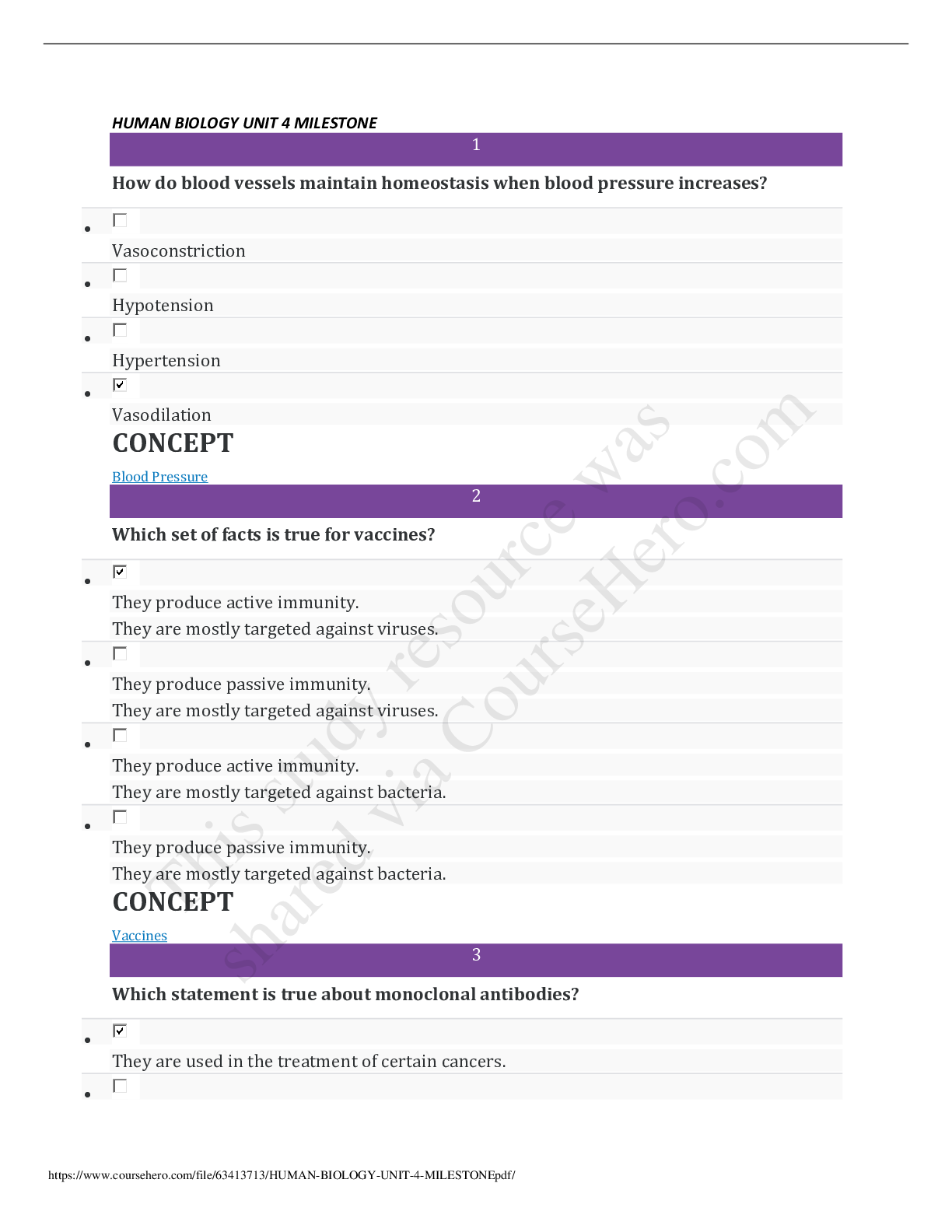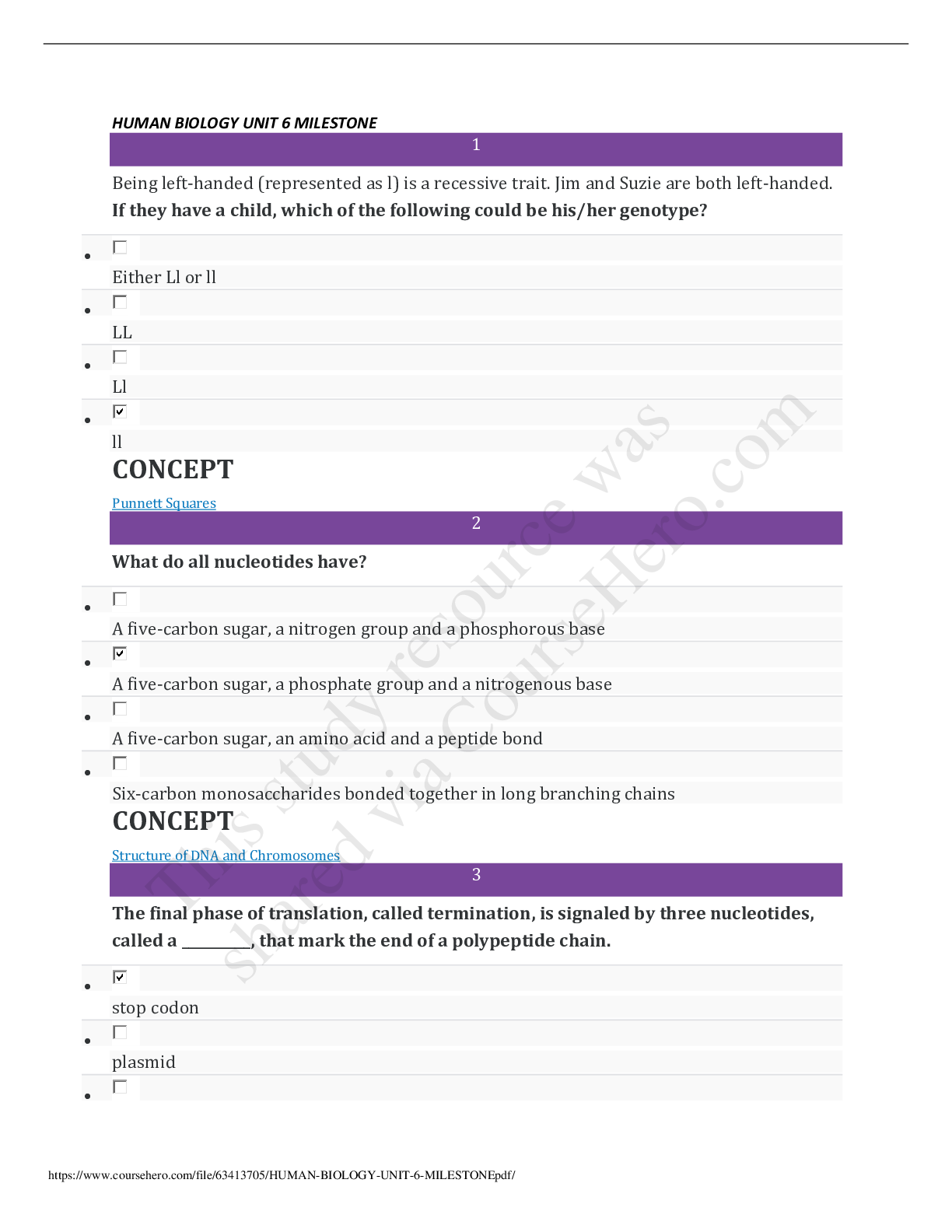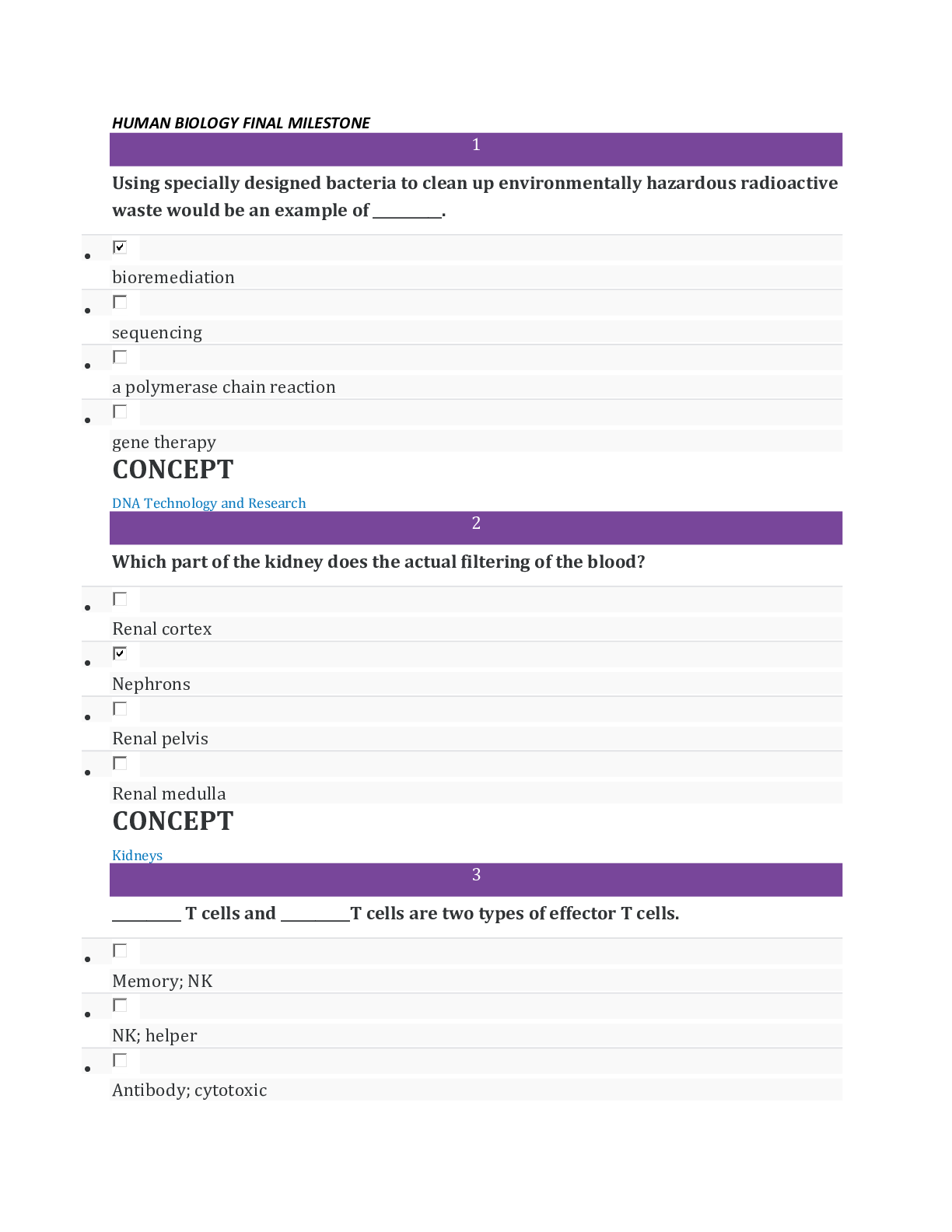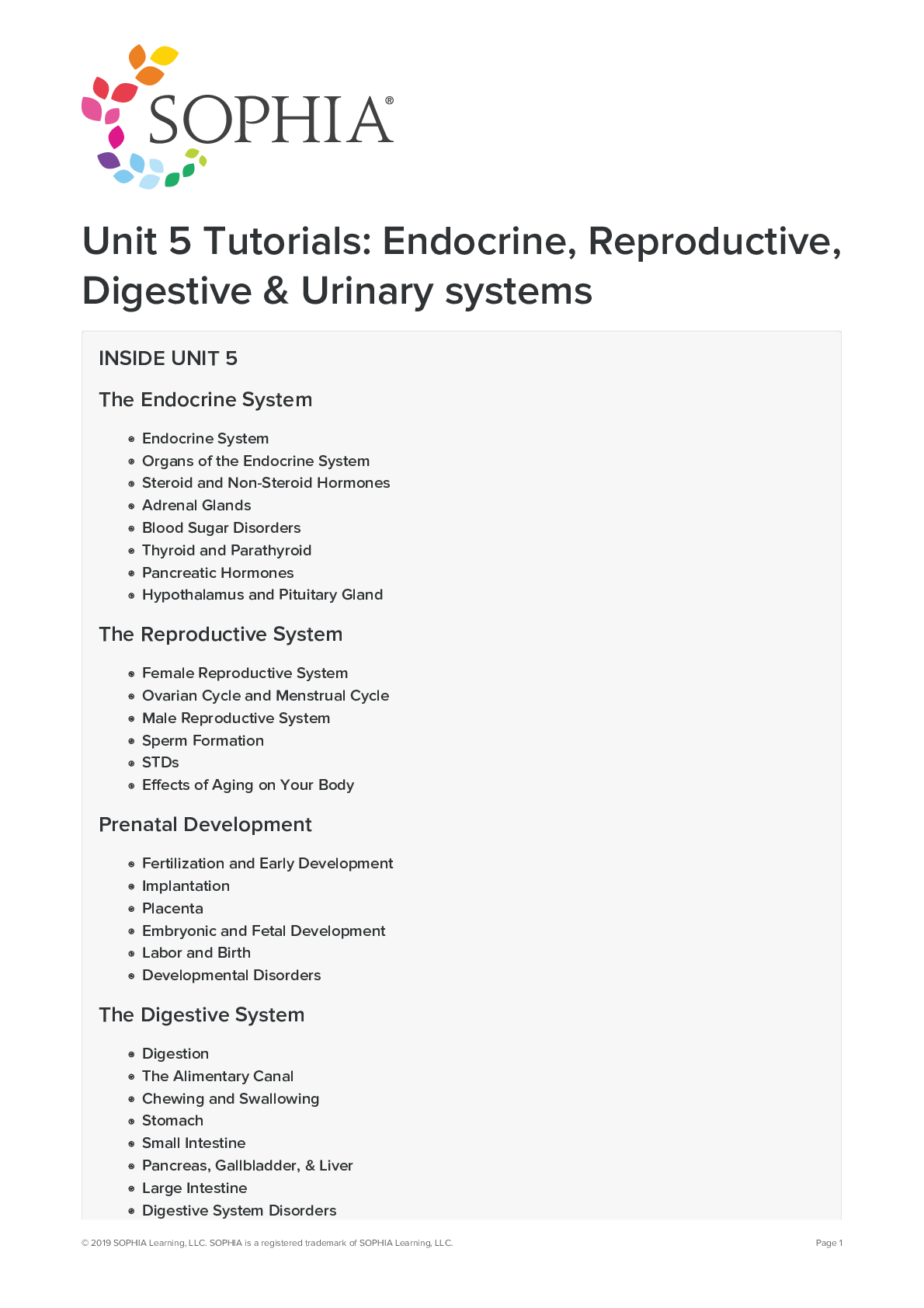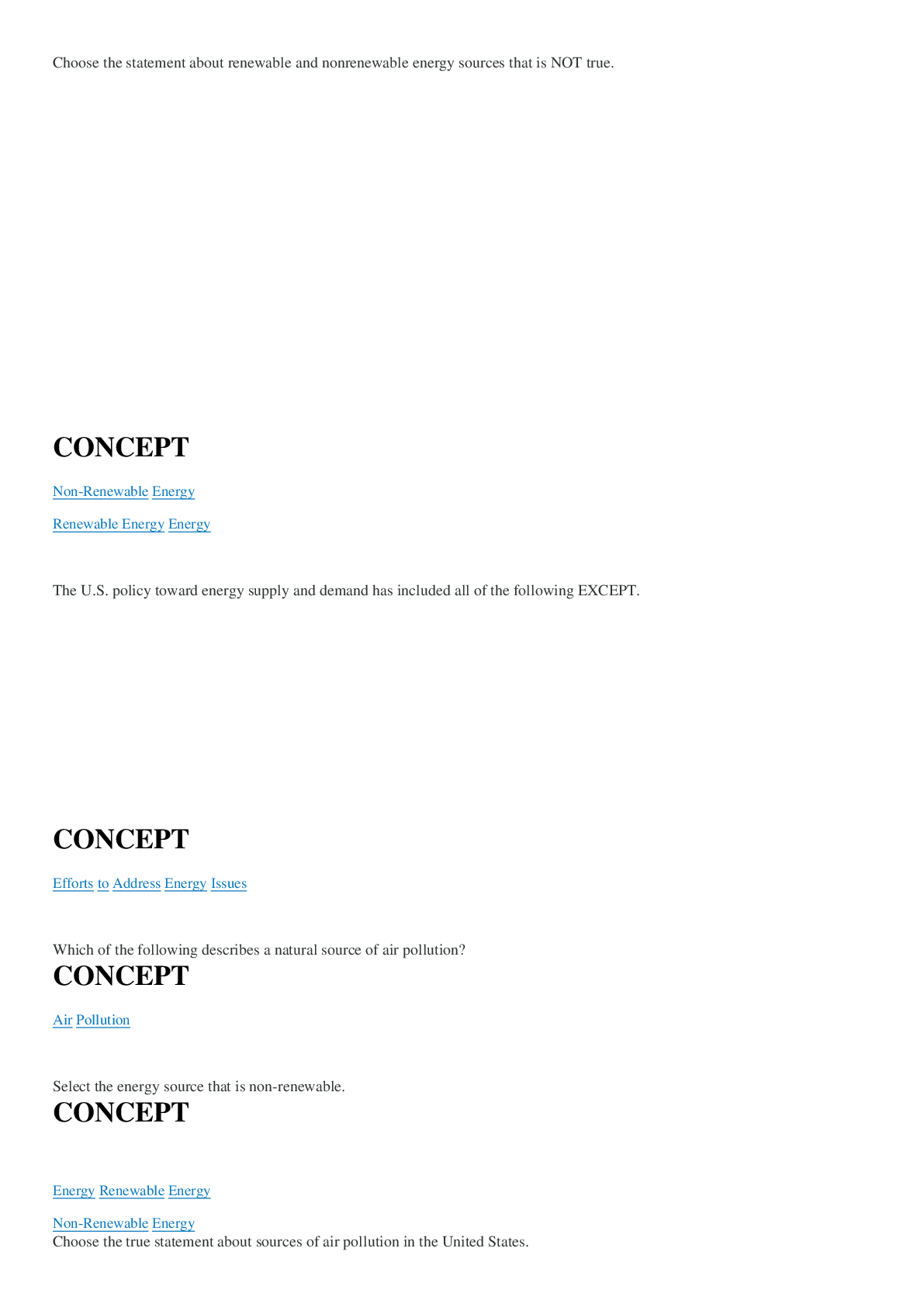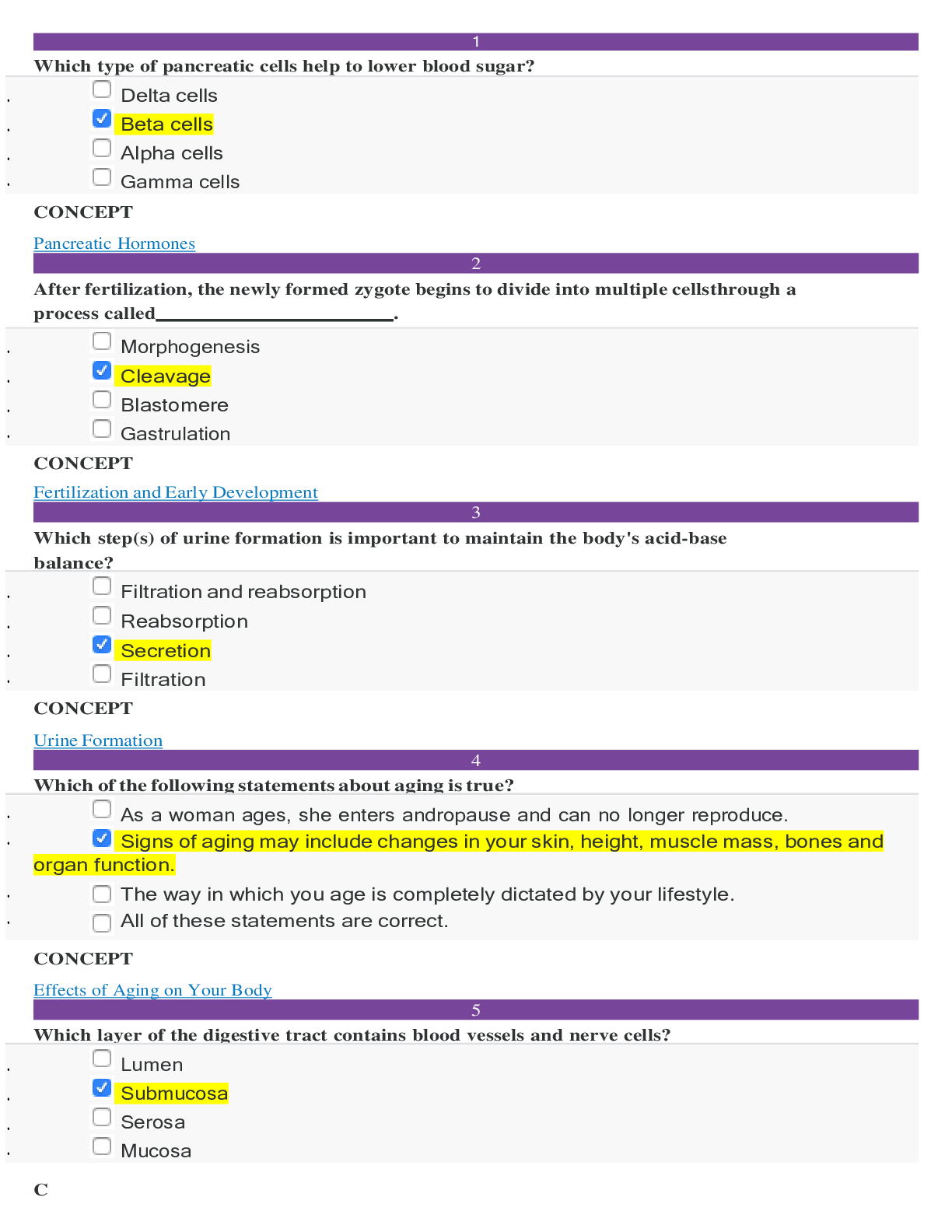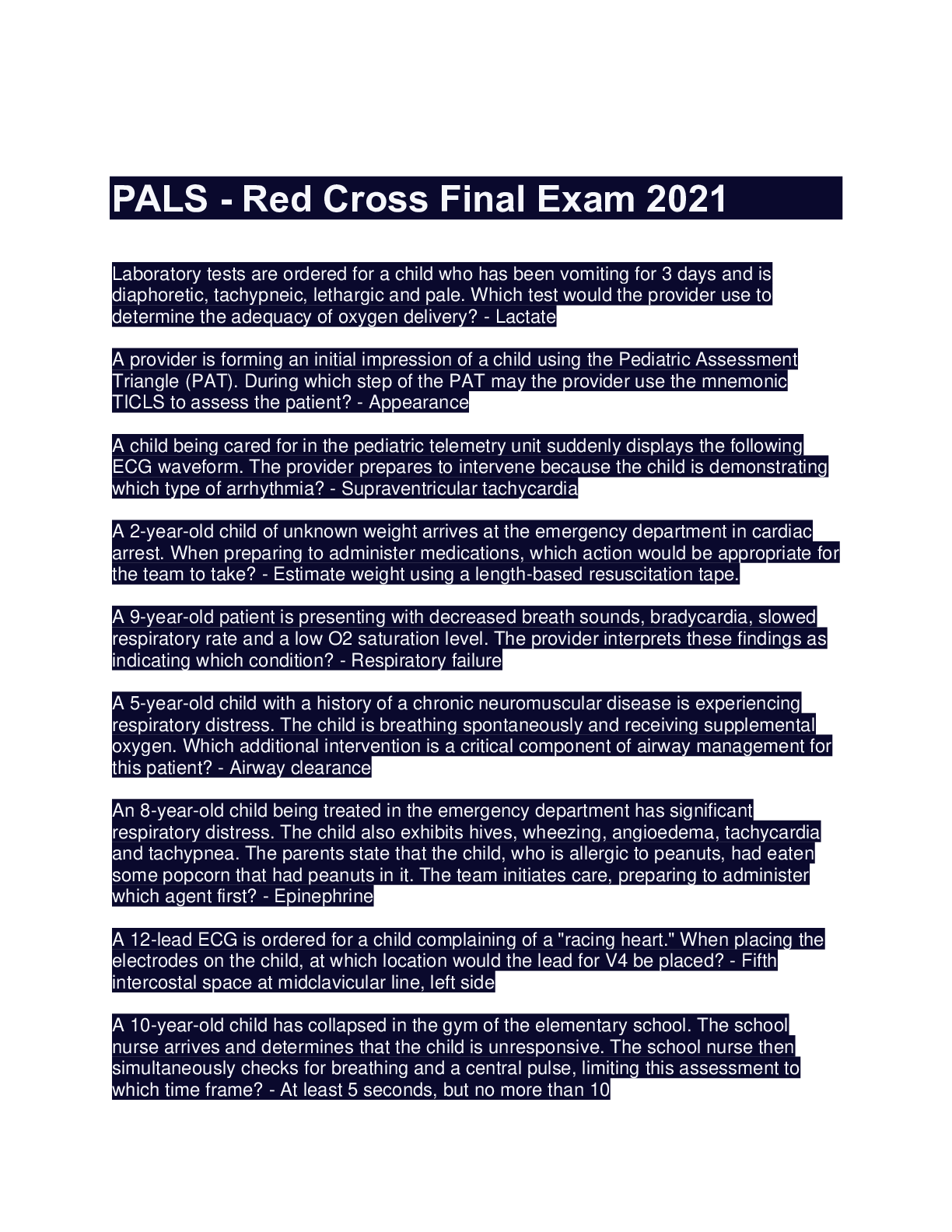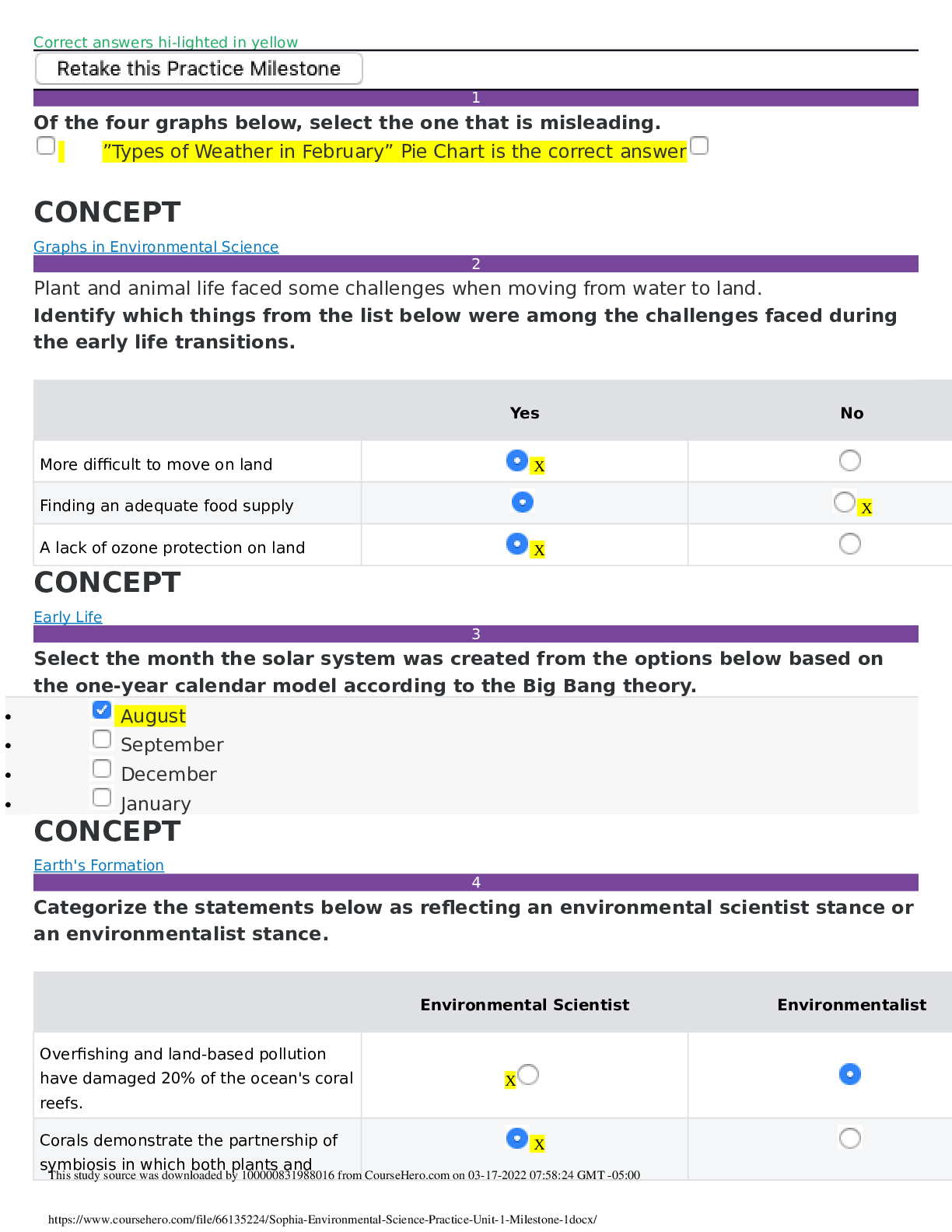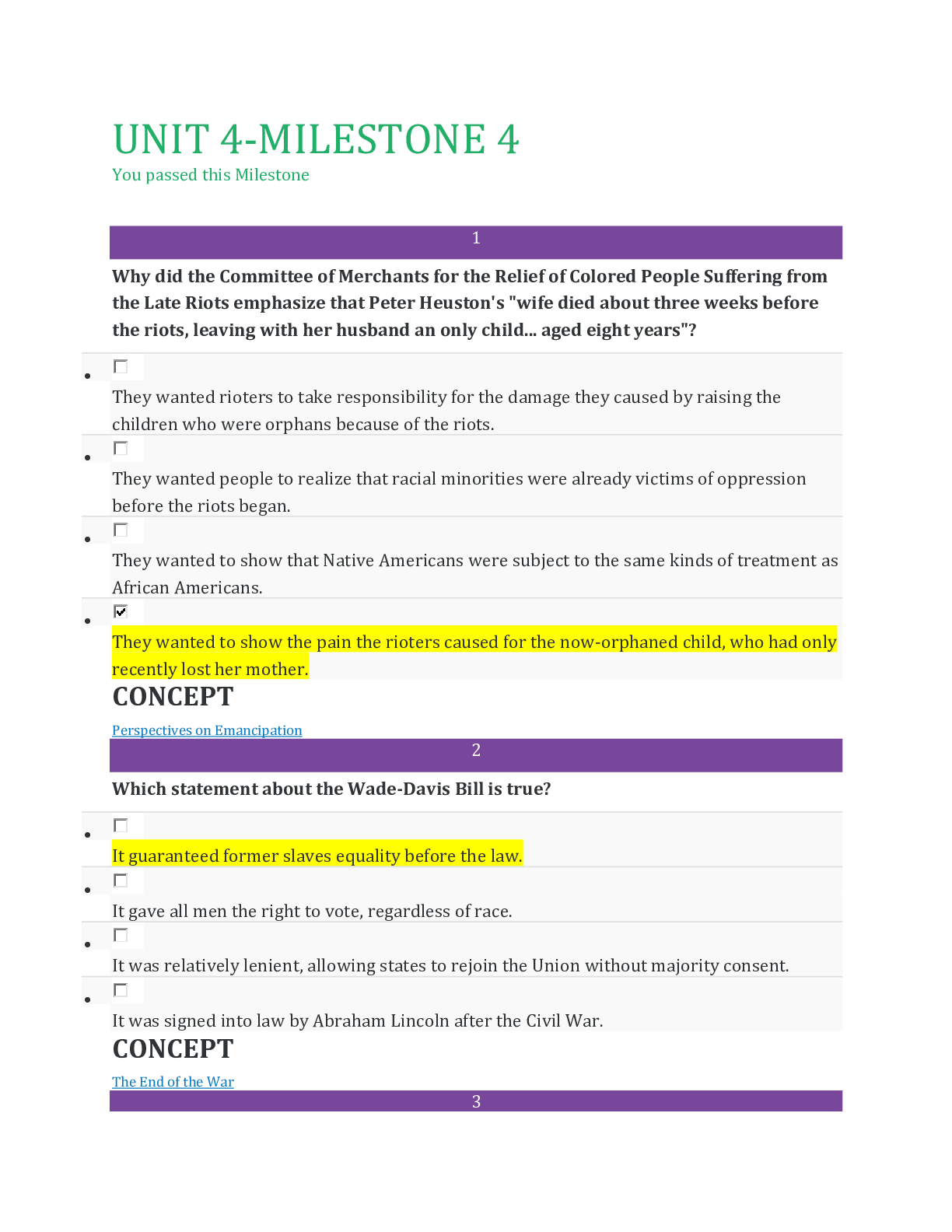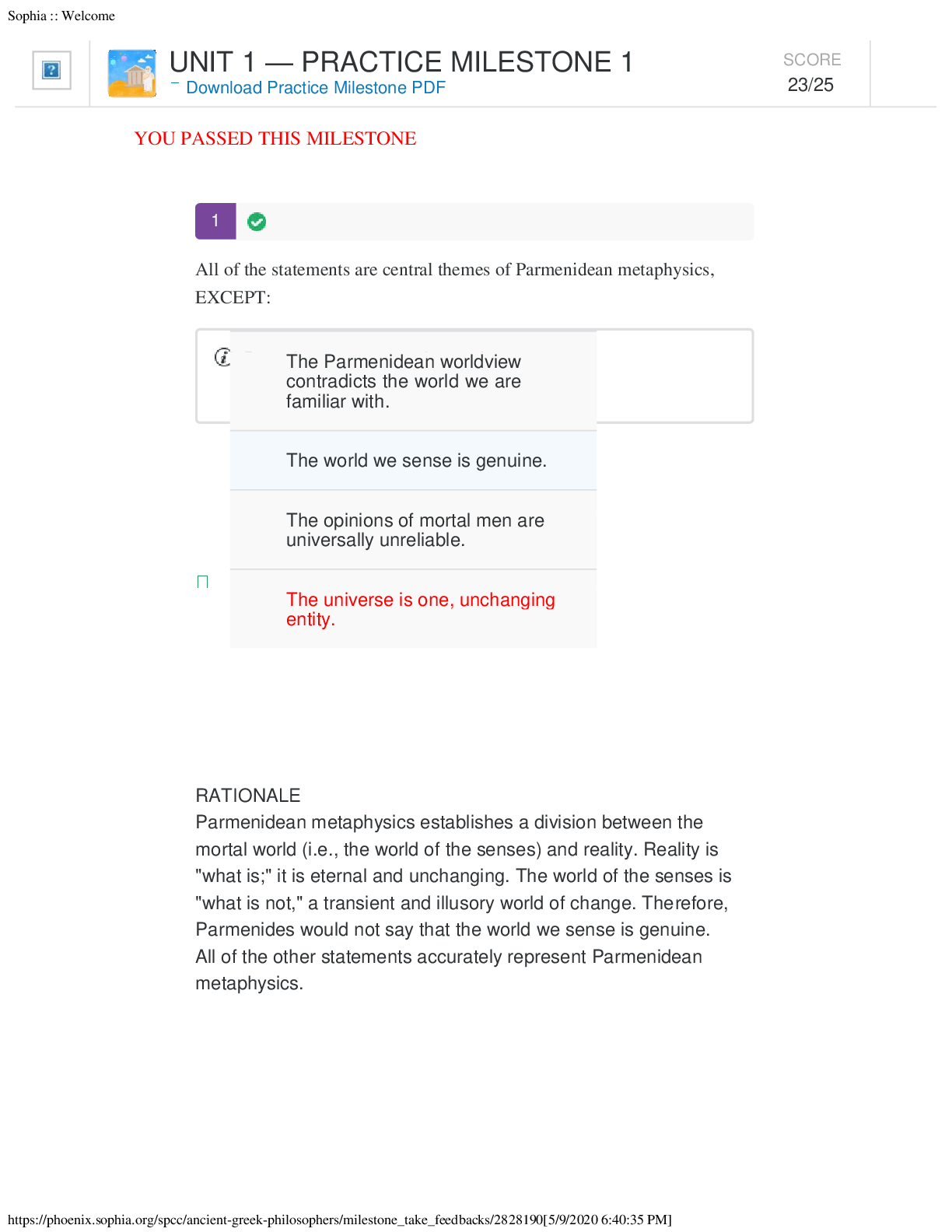Biology > SOPHIA PATHWAY > SOPHIA_HUMAN_BIOLOGY_UNIT_5_MILESTONE 2020 - Southern New Hampshire University | SOPHIA_HUMAN_BIOLOG (All)
SOPHIA_HUMAN_BIOLOGY_UNIT_5_MILESTONE 2020 - Southern New Hampshire University | SOPHIA_HUMAN_BIOLOGY_UNIT_5_MILESTONE 2020
Document Content and Description Below
HUMAN BIOLOGY UNIT 5 MILESTONE 1 Which type of digestion occurs in the mouth? • Neither mechanical nor chemical • Both mechanical and chemical • Chemical • Mechanical CONCEPT Chewi... ng and Swallowing 2 Which of the following statements about secondary messengers is true? • They are a third type of hormone, although they differ significantly from the other two. • They carry out the effects of non-steroid hormones within the cell. • They work with both steroid and non-steroid hormones to carry out their effects in the cell. • They carry out the effects of steroid hormones within the cell. CONCEPT Steroid and Non-Steroid Hormones 3 Which of these is true about the cervix? • It is the lower part of the uterus which leads to the vagina. • It is the site for the production of oocytes. • It is a point where the fallopian tube attaches to the uterus. •It is the inner lining of the uterus. CONCEPT Female Reproductive System 4 A woman has had a miscarriage; what happened to her fetus? • It was underdeveloped. • It was implanted too firmly in the uterus. • It was overdeveloped. • It was spontaneously expelled from the uterus. CONCEPT Embryonic and Fetal Development 5 Which of the following describes a way in which a diuretic can impact homeostatic conditions in the body? • It can cause the body to drastically decrease urine output. • It can cause the water to overly concentrate urine. • It can cause the body to lose more water than necessary through urine. • It can cause the body to reabsorb more sodium than it normally would. CONCEPT Fluid Balance and Blood Pressure 6 Which of the following best describes blood pH when homeostasis is maintained? • Slightly acidic • Neutral• Heavily acidic • Slightly basic CONCEPT Blood pH 7 What does "renal" mean? • Having to do with the kidneys • The back half of the abdomen • Filtrating • Having to do with the urinary system CONCEPT Kidneys 8 Which part of the digestive system primarily absorbs nutrients? • Small intestine • Stomach • Pharynx • Mouth CONCEPT Digestion 9 Which part of the large intestine is analogous to the urinary bladder? • Anus• Rectum • Appendix • Descending colon CONCEPT Large Intestine 10 What stimulus will cause the baby to take its first breath? • Increased levels of oxytocin • The presence of air after birth • The cutting of the umbilical cord • Carbon dioxide in the bloodstream CONCEPT Labor and Birth 11 Which of the following statements is true? • Hormones are generalized and can have an effect on any cell in the body. • The pituitary gland is an organ of the endocrine system that secretes the hormone melatonin. • Hormones, which are secreted by the endocrine system, help regulate homeostasis in the body. • Insulin is an example of a hormone that is released by the adrenal glands. CONCEPT Endocrine System 12After fertilization, the newly formed zygote begins to divide into multiple cells through a process called __________. • Gastrulation • Morphogenesis • Blastomere • Cleavage CONCEPT Fertilization and Early Development 13 Which of these produces blood cells and germ cells at the early stages of fetal development? • Allantois • Yolk sac • Placenta • Amnion CONCEPT Placenta 14 What is the outer part of the adrenal gland called? • Adrenal dermis • Adrenal body • Adrenal medulla •Adrenal cortex CONCEPT Adrenal Glands 15 Which of the following statements about aging is true? • Signs of aging may include changes in your skin, height, muscle mass, bones and organ function. • As a woman ages, she enters andropause and can no longer reproduce. • All of these statements are correct. • The way in which you age is completely dictated by your lifestyle. CONCEPT Effects of Aging on Your Body 16 Select the statement that describes the filtration stage of urine formation. • To maintain the body's acid-base balance, substances move from the blood in the peritubular capillaries into nephron tubules. • The bloodstream retrieves valuable substances that have been separated out during this second step of urine formation. • Water and other small solutes are separated out of the blood in the Bowman’s capsule. • During this third step of urine formation, urine filters into the ureters and ultimately to the urinary bladder for storage. CONCEPT Urine Formation 17 Which type of digestion occurs in the stomach? •Both mechanical and chemical • Mechanical • Neither mechanical nor chemical • Chemical CONCEPT Stomach 18 Which choice is true of Sertoli cells? • They produce sperm. • They release enzymes that help in fertilization. • They provide nourishment to developing sperm. • They release the male sex hormone. CONCEPT Sperm Formation 19 Which organ releases enzymes that help neutralize the acids in chyme? • Pancreas • Liver • Gallbladder • All three CONCEPT Pancreas, Gallbladder, & Liver 20Which organ secretes fructose that is used by sperm as an energy source? • Prostate gland • Vas deferens • Seminal vesicle • Epididymis CONCEPT Male Reproductive System 21 Which segment of the small intestine connects to the large intestine? • Lipase • Duodenum • Ileum • Jejunum CONCEPT Small Intestine 22 Which of the following is most likely the cause of Graves' disease? • Higher than normal levels of parathyroid hormone in the blood • Lower than normal levels of parathyroid hormone in the blood • Higher than normal levels of thyroid hormones in the blood •Lower than normal levels of thyroid hormones in the blood CONCEPT Thyroid and Parathyroid 23 Which definition best suits pancreatic islets? • Groups of all three types of pancreatic cells • Cells of the pancreas that secrete insulin • Cells of the pancreas that secrete glucagon • Cells of the pancreas that secrete somatostatin CONCEPT Pancreatic Hormones 24 Before an oocyte leaves the ovary, it is surrounded by nourishing cells and is called what? • A menarche • A zona pellucida • An oviduct • A follicle CONCEPT Ovarian Cycle and Menstrual Cycle 25 Which layer of the digestive tract contains blood vessels and nerve cells? • Submucosa • Lumen• Serosa • Mucosa CONCEPT The Alimentary Canal 26 Which organ of the endocrine system is part of the brain? • Parathyroid gland • Adrenal gland • Pancreas • Pineal gland CONCEPT Organs of the Endocrine System [Show More]
Last updated: 1 year ago
Preview 1 out of 10 pages

Reviews( 0 )
Document information
Connected school, study & course
About the document
Uploaded On
Sep 10, 2020
Number of pages
10
Written in
Additional information
This document has been written for:
Uploaded
Sep 10, 2020
Downloads
0
Views
68


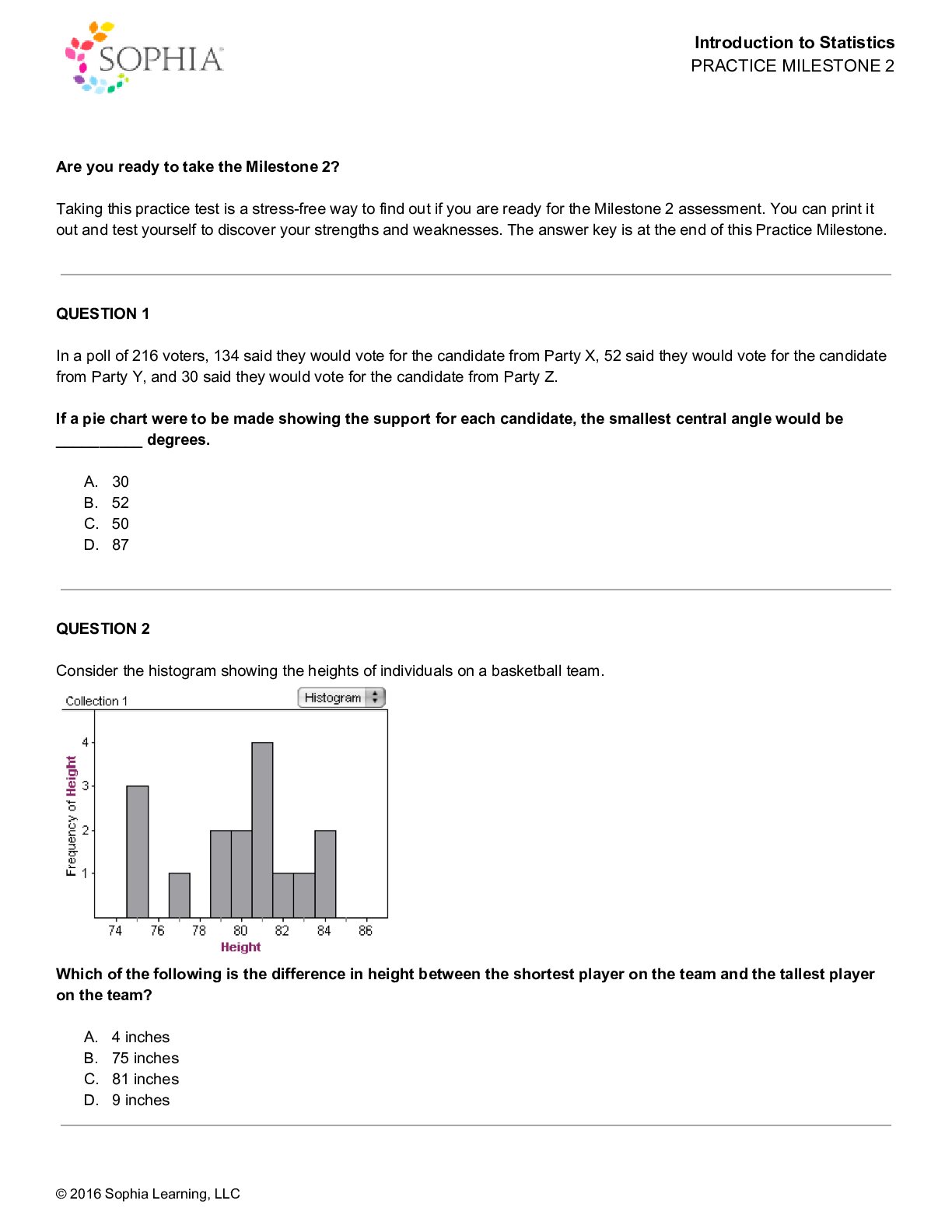
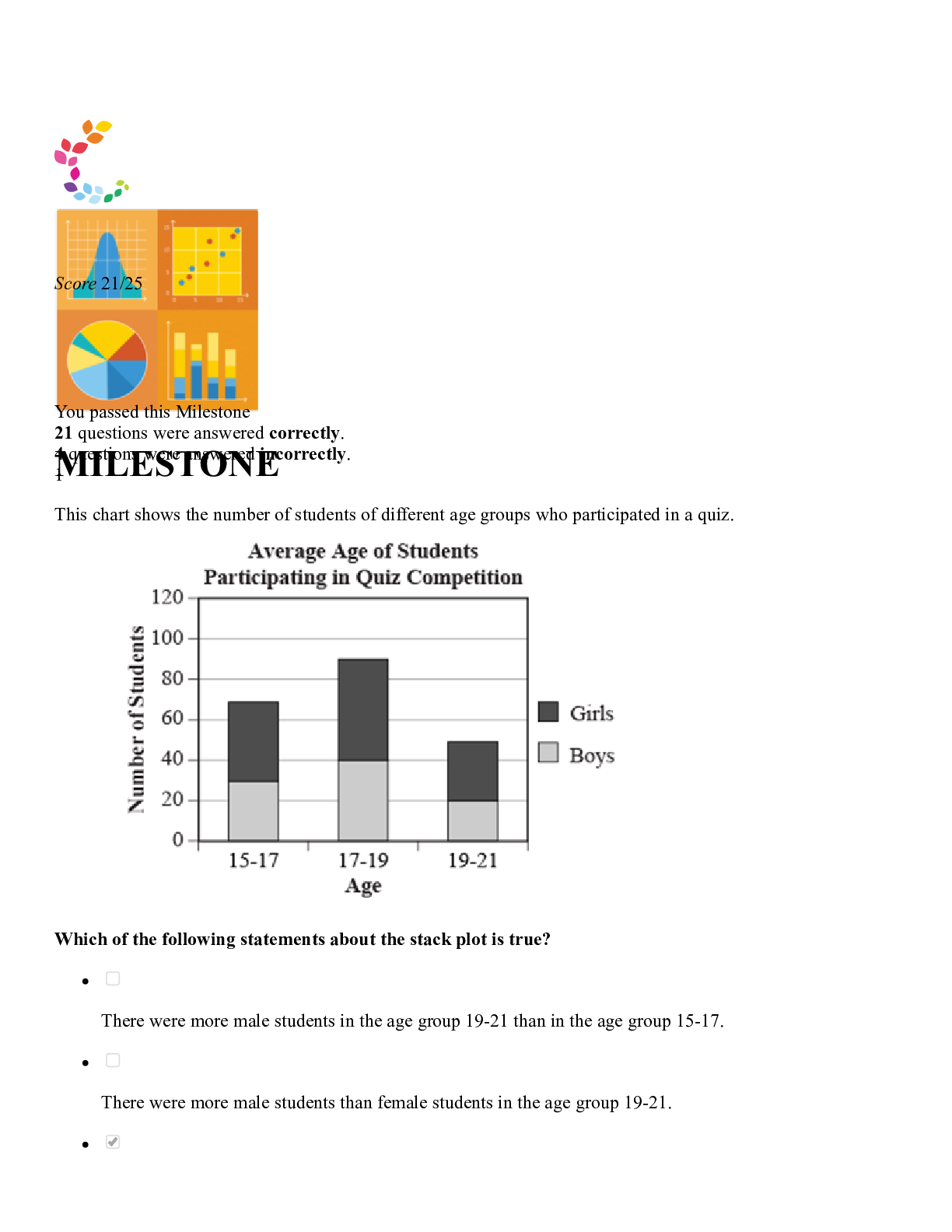


 – University of the People.png)

 – University of Maryland.png)
 – University of the People.png)
 – University of the People.png)
 – University of the People.png)
